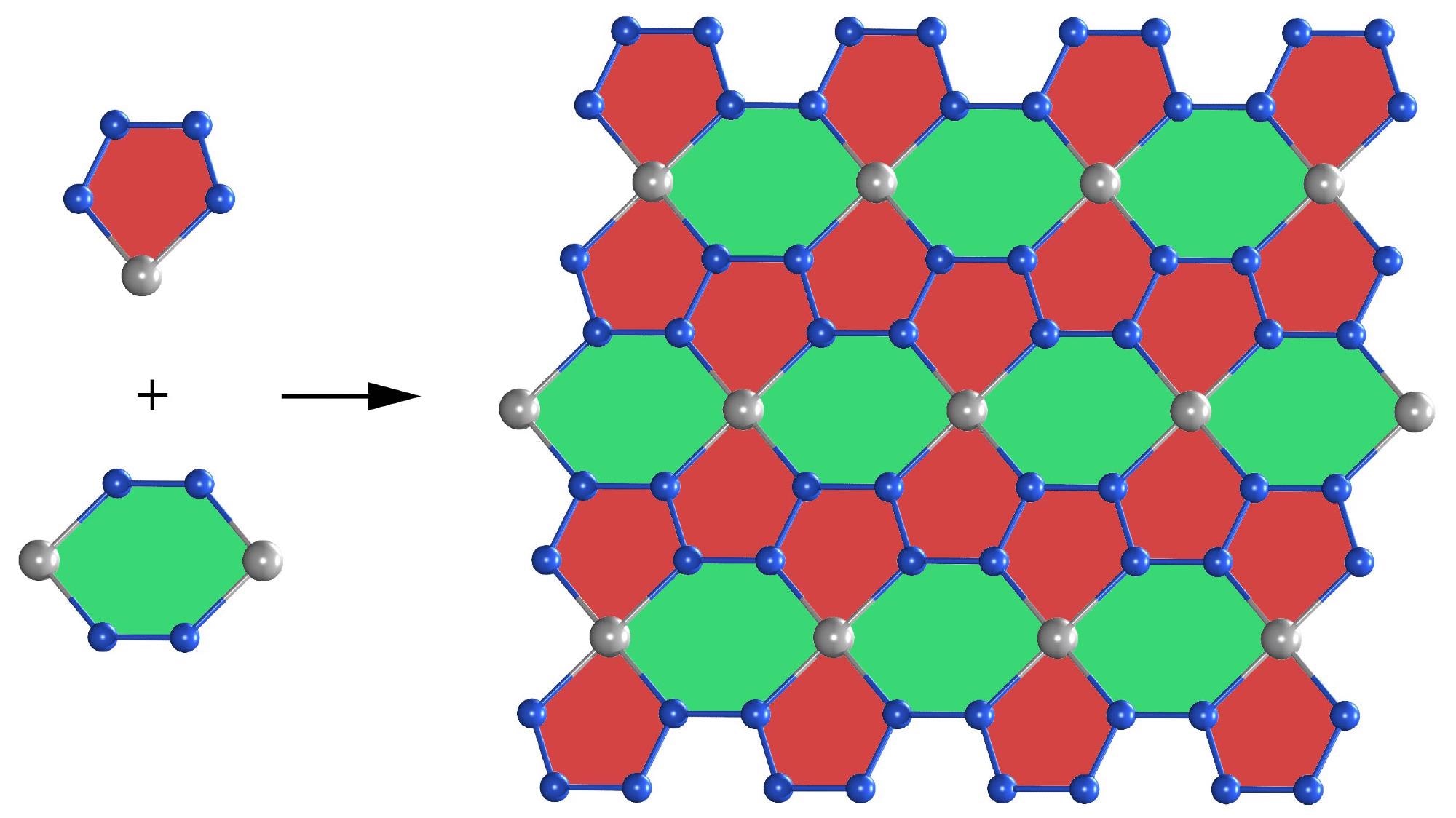Apr 28 2021
An international research team including scientists from the University of Bayreuth has used modern high-pressure technology to successfully discover, for the first time, a previously unknown two-dimensional (2D) material.
 A single beryllonitrene layer consists of BeN4 pentagons and Be2N4 hexagons. The beryllium atoms are shown as grey balls, nitrogen atoms as blue balls. Image Credit: M. Bykov.
A single beryllonitrene layer consists of BeN4 pentagons and Be2N4 hexagons. The beryllium atoms are shown as grey balls, nitrogen atoms as blue balls. Image Credit: M. Bykov.
Named beryllonitrene, the new material features nitrogen and beryllium atoms that are arranged regularly. It exhibits a unique electronic lattice structure that is highly promising for quantum technology applications.
The production of this material necessitated a compression pressure of about one million times more than the pressure of the Earth’s atmosphere. The findings of the study have been reported by the researchers in the Physical Review Letters journal.
From the time graphene (made of carbon atoms) was discovered, the curiosity about 2D materials has been steadily increasing in research and industry alike. Now, scientists from the University of Bayreuth and their international collaborators have synthesized novel compounds made of beryllium and nitrogen atoms under very high pressures of up to 100 gigapascals.
The compounds are beryllium polynitrides, a few of which conform to the monoclinic crystal system and the others to the triclinic crystal system. When there is a drop in pressure, the triclinic beryllium polynitrides show an unusual property. They assume a crystal structure formed of layers, where each layer includes zigzag nitrogen chains linked by beryllium atoms.
Thus, this structure can be described as a planar one that contains BeN4 pentagons and Be2N4 hexagons. Each layer, therefore, represents a 2D material—beryllonitrene.
Beryllonitrene is qualitatively a new 2D material. In contrast to graphene, beryllonitrene’s 2D crystal structure leads to a somewhat distorted electronic lattice. Due to beryllonitrene’s resultant electronic properties, it would be best suited for quantum technology applications if it could be manufactured on an industrial scale someday.
The goal of this juvenile field of research and development is to leverage the quantum mechanical properties and structures of matter to achieve technical innovations—for instance, to develop high-performance computers or for innovative encryption techniques with the aim of secure communication.
For the first time, close international cooperation in high-pressure research has now succeeded in producing a chemical compound in that was previously completely unknown. This compound could serve as a precursor for a 2D material with unique electronic properties.
Dr Natalia Dubrovinskaia, Study Co-Author and Professor, Laboratory for Crystallography, University of Bayreuth
“The fascinating achievement was only possible with the help of a laboratory-generated compression pressure almost a million times greater than the pressure of the Earth’s atmosphere. Our study thus once again proves the extraordinary potential of high-pressure research in materials science,” added Dr Natalia.
Prof. Dr Leonid Dubrovinsky from the Bavarian Research Institute of Experimental Geochemistry & Geophysics at the University of Bayreuth noted: “However, there is no possibility of devising a process for the production of beryllonitrene on an industrial scale as long as extremely high pressures, such as can only be generated in the research laboratory, are required for this.”
“Nevertheless, it is highly significant that the new compound was created during decompression and that it can exist under ambient conditions,” added Dr Dubrovinsky, who is also the corresponding author of this study.
In principle, we cannot rule out that one day it will be possible to reproduce beryllonitrene or a similar 2D material with technically less complex processes and use it industrially. With our study, we have opened up new prospects for high-pressure research in the development of technologically promising 2D materials that may surpass graphene.
Dr Leonid Dubrovinsky, Professor, Bavarian Research Institute of Experimental Geochemistry & Geophysics, University of Bayreuth
Journal Reference:
Bykov, M., et al. (2021) High-Pressure Synthesis of Dirac Materials: Layered van der Waals Bonded BeN4 Polymorph. Physical Review Letters. doi.org/10.1103/PhysRevLett.126.175501.